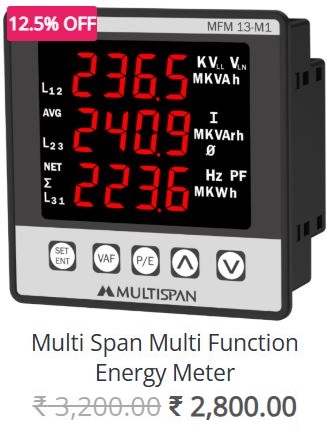What Are Flow Elements?
Flow elements are mechanical devices used to measure the flow rate of liquids or gases within pipes or ducts. By introducing a constriction or restriction in the flow path, these devices create a pressure difference that can be measured and used to calculate the flow rate. These elements are fundamental in industries such as oil and gas, chemical processing, water treatment, and HVAC systems, where monitoring and controlling fluid flow is essential to maintaining safety, efficiency, and compliance with regulatory standards.
Types of Flow Elements
- Orifice Plates
- Working Principle: The orifice plate is one of the simplest and most commonly used flow elements. It consists of a thin plate with a precisely sized hole in the center. When fluid flows through the pipe and encounters the orifice, the flow area is restricted, causing the fluid velocity to increase and the pressure to drop. The difference in pressure between the upstream and downstream sides of the orifice can be measured and used to calculate the flow rate.
- Key Advantages: Orifice plates are relatively low-cost, easy to install, and suitable for a wide range of applications. They can handle a variety of fluids, including gases, liquids, and slurries.
- Applications: Orifice plates are used in industries like chemical processing, oil and gas, and wastewater treatment to measure flow rates, particularly in large-diameter pipelines.
- Venturi Tubes
- Working Principle: The Venturi tube operates on the same principle as the orifice plate, but with a more complex shape. It consists of a converging section, a throat (the narrowest part), and a diverging section. As fluid flows through the Venturi tube, it accelerates as it enters the throat, causing a drop in pressure. The pressure difference between the wider sections of the tube and the throat can be measured to determine the flow rate.
- Key Advantages: Venturi tubes offer lower pressure loss compared to orifice plates, making them more energy-efficient, especially for high-flow applications. They also tend to be more accurate because the flow is less disturbed by the constriction.
- Applications: Venturi tubes are commonly used in water treatment plants, HVAC systems, and large-scale industrial processes where high flow rates need to be measured with minimal energy loss.
- Flow Nozzles
- Working Principle: Flow nozzles are similar to Venturi tubes but have a simpler design. They are typically used for measuring the flow of high-velocity fluids. The nozzle has a converging section that narrows toward the center, creating an acceleration in the fluid and resulting in a pressure drop that can be measured to determine flow rate.
- Key Advantages: Flow nozzles are particularly useful in high-pressure and high-temperature applications where orifice plates and Venturi tubes might be less accurate. They provide reliable measurements in applications with high-velocity flows.
- Applications: Commonly used in steam flow measurement, flow nozzles are also utilized in the oil and gas industry and in power generation.
- Pitot Tubes
- Working Principle: A Pitot tube is a device that measures the velocity of a fluid by capturing the fluid’s pressure at the stagnation point (the point where the fluid comes to rest). The device consists of a tube that is pointed into the flow. The pressure at the stagnation point is compared with the static pressure of the fluid to calculate the flow velocity.
- Key Advantages: Pitot tubes are simple, cost-effective, and reliable for measuring the velocity of fluids in open channels, ducts, and pipes.
- Applications: Used in airspeed measurements for HVAC systems, wind tunnels, and in the aerospace industry for flight measurements, Pitot tubes are versatile and find applications in various fields.
- Turbine Flow Meters
- Working Principle: Turbine flow meters consist of a rotor placed within the flow path. As fluid passes through the meter, it causes the rotor to spin. The rotational speed of the rotor is directly proportional to the flow rate, and this speed can be measured using sensors to determine the flow rate.
- Key Advantages: Turbine flow meters offer high accuracy and are well-suited for low-viscosity fluids. They also provide real-time flow measurements and are relatively easy to install.
- Applications: Commonly used in oil and gas industries, water treatment plants, and chemical processing facilities for accurate flow measurement of clean liquids and gases.
Beyond Traditional Flow Elements: Emerging Technologies
While traditional flow elements like orifice plates and Venturi tubes remain popular, newer technologies are emerging to meet the demands of more complex and high-performance applications. Some of these advanced technologies include:
- Coriolis Flow Meters: These meters use the Coriolis effect to directly measure mass flow and density of fluids. They are highly accurate and suitable for applications where precise measurement of dense fluids or multi-phase flows is required.
- Ultrasonic Flow Meters: These meters use sound waves to measure the velocity of a fluid. They are non-intrusive and ideal for applications where there is a need for flow measurement without interrupting the flow path, such as in large pipelines.
- Electromagnetic Flow Meters: These devices use Faraday’s Law of Induction to measure the flow rate of conductive fluids. They are ideal for measuring slurries, dirty liquids, and wastewater.
Choosing the Right Flow Element
The choice of flow element depends on a variety of factors, including:
- Type of fluid: Whether the fluid is a gas, liquid, or slurry can influence the choice of flow element. Some devices, like orifice plates, work well with a range of fluids, while others like electromagnetic flow meters are better suited for conductive liquids.
- Flow conditions: High-temperature, high-pressure, and high-velocity conditions may require more specialized flow elements such as flow nozzles or turbine flow meters.
- Accuracy requirements: For high-precision measurements, technologies like Venturi tubes or Coriolis meters may be necessary. For less demanding applications, simpler devices like Pitot tubes or orifice plates might suffice.
- Cost considerations: Cost is always a factor in the selection process. While some flow elements, like orifice plates, are low-cost and easy to install, more complex technologies like Coriolis meters may come with a higher price tag.







